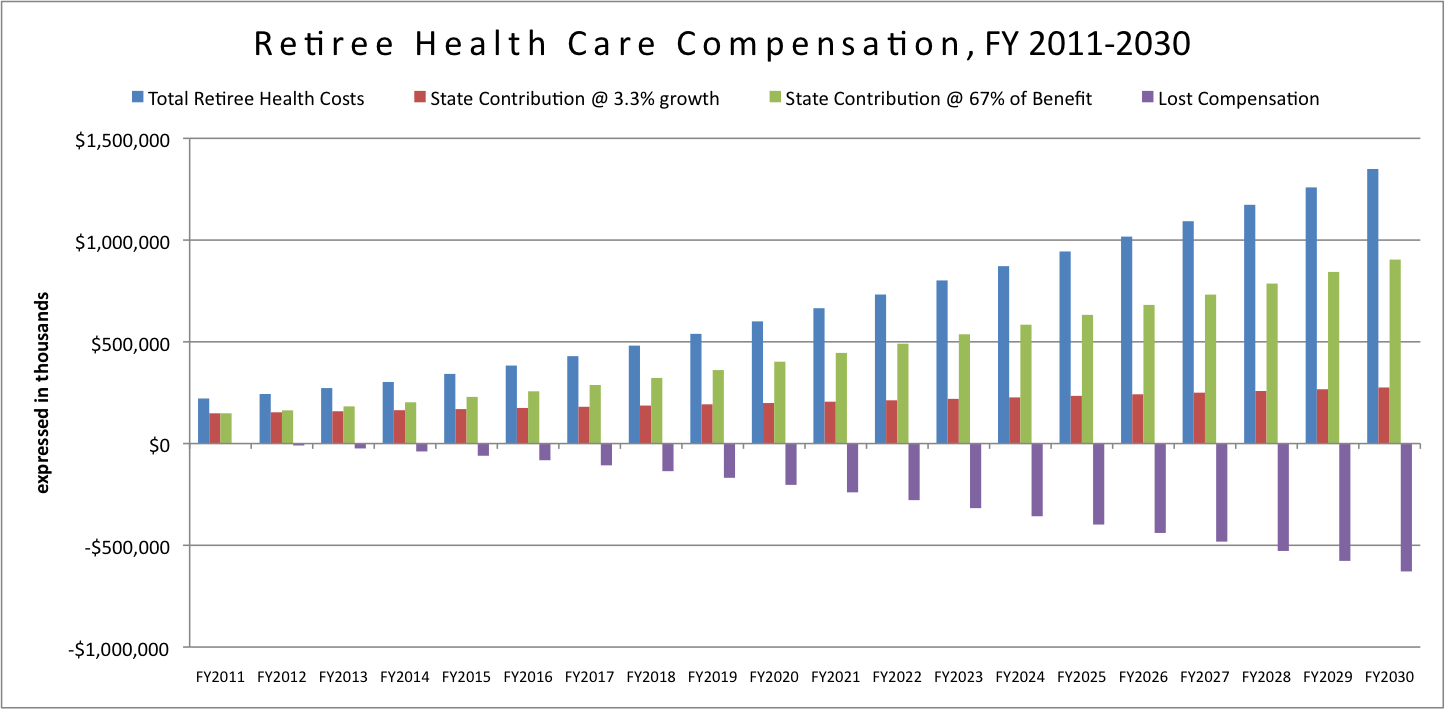In his column this morning Phil Kabler briefly noted that the result of capping the state’s contribution to retiree health insurance was “that the burden was shifted onto current and future retirees.” This is something I wrote about last week, so it was nice to see this basic point acknowledged in print. Another point that has been absent from the debate on OPEB is how much in compensation public employees will lose because of PEIA’s decision to cap the retiree subsidy provided by the state.
The chart below provides some estimates.
In FY 2011, the state is estimated to pay approximately 67 percent or $148 million of total retiree health care costs, while retirees will pay about 33 percent or $72 million. With the 3.3 percent growth cap in place, by FY 2030 the state will only be paying about 9% of retiree health costs, while retirees will have to pay 89% of the costs (of course, no retiree will be able to afford this cost, but that is another discussion).
Over the 20 year period, the total costs of retiree health care is $13.7 billion. If the state continued to pay 67 percent of total costs (green bars) like it does today it would cost $9.2 billion over this 20 year period. With the cap in place (red bars), the state will pay only about $4.1 billion over the next 20 years for retiree health care costs.

If no other funding source is found to offset the cost shift to public employees, participating public employees will lose about $5.1 billion over the next 20 years in compensation. Of course, even if a funding source is found it is highly unlikely to defray even half of the $5.1 billion in lost compensation.